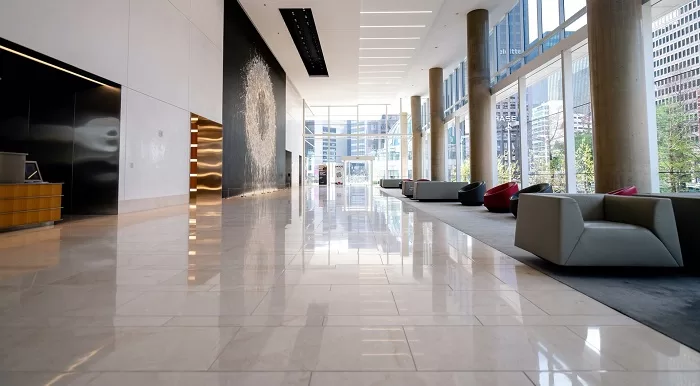Lifestyle
How to Fix a Worn-Out Concrete Floor and Give it a New Look

Concrete is one of the most rigid and durable flooring options available at your disposal. But after long years of service, wear and tear are inevitable. Freeze-thaw circles and the application of deicing salts are just some of the reasons your concrete floor may be cracking, chipping, flaking, or even peeling away. Faulty installation, frequent heavy traffic, everyday wear, and chemical spills damage your floor.
But you don’t have to put up with a dull, rough surface. You can give your old floor a facelift with the a state of the art epoxy floor coating.
Old Floor Repair Options for A New Look
Micro-Toppings
Micro-topping refers to overlaying the existing worn-out concrete floor with thin layers of concrete. The layers are usually made up of concrete, sand, and a polymer modifier. Since these micro toppings are not self-leveling, they are applied using trowels or brushes, depending on your choice of the final look.
The good part about micro toppings is that they dry quickly. Typically, the curing time is 24 hours, and people can walk again on the repaired surface after one and half days to two days. You can therefore improve high traffic areas using this method.
You have a choice between a smooth and a rough surface depending on the finishing process. You can apply a thin layer on top of the recommended two base layers that don’t contain sand to achieve a smooth texture.
The downside is that the surface is porous and will therefore need a sealer. The surface is hard to clean and maintain since it is prone to trapping dirt.
Stamped Concrete
If you have color and aesthetics in mind, stamped concrete is your best worn-out concrete surface repair method. A stamped concrete overlay will improve your concrete floor’s quality and leave it looking as good as new.
Stamped concrete is merely a quarter to 5/8 inch thick concrete overlay applied on the current concrete slab. The contractor will then use a stencil or stamping tool to create various designs that imitate natural materials such as natural stone, tiles, or brick.
The stamped surface will cure in a day and take about two days before walking on it again. Tints and pigments are added to the mortar to give the floor the desired shades of color. In most instances, the floor is usually slippery due to a sealer’s application, and the contractor can solve this problem by adding more sand to the mortar.
The best part with stamped concrete is that it offers longevity and beauty without digging a hole into your pockets, as exotic flooring materials would do.
Epoxying the Floor
Epoxy compounds are two-part coatings made of a polyamine hardener and an epoxy resin. They are sometimes part of a DIY Epoxyshield kit. Mixing the two elements initiates a chemical process with cross-linking of elements during curing. The mixture is then applied on the floor using brushes or rollers and forms a long-lasting plastic coating that can endure heavy traffic, wear and tear.
Epoxy coated surfaces are easy to maintain since they have impressive mechanical capabilities; for example, they’re resistant to staining, abrasion, and chemical action. Colored sand can also be sprinkled over the wet coat to give it a grainy colorful appearance. You can choose between solid colors, metallic shine, or even terrazzo.
Epoxy coatings are resistant to oil or grease stains and can bear a lot of weight, making them suitable for commercial flooring, industry, and warehouse purposes. It is also a good idea to use them for your garage and basement floors to keep away moisture.
Self-Leveling Underlayment
This is a method of renovating worn-out concrete floors similar to micro toppings. The difference is that the repair mortar is self-leveling. The thick layer is suitable for surfaces with severe defects since its thickness will cover all uneven surfaces.
You can add an underlayment over the already existing concrete surface to make it smooth. Underlayment provides a dense floor that will last for a long. What’s more, you got the option of adding tints and dyes when mixing the mortar for beauty purposes.
Repairing old and worn-out concrete floors is one of the most excellent ways of giving your concrete floors a facelift. All four methods are applicable for both home use and commercial use. They can be applied to the already existing concrete floor surfaces for durability, ease of maintenance, and aesthetic purposes.























































